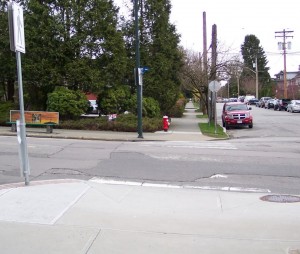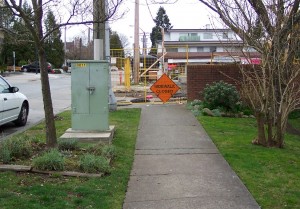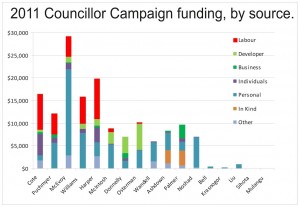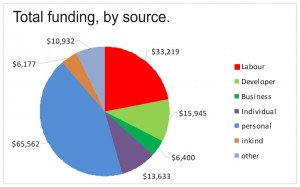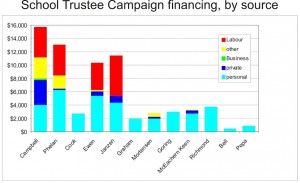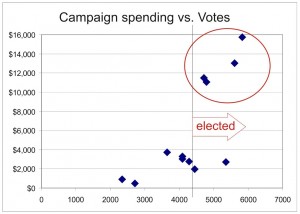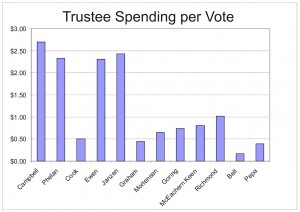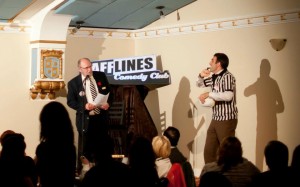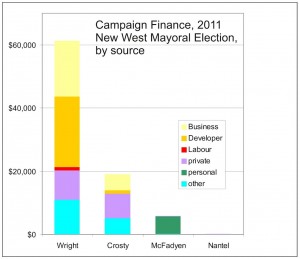You wouldn’t know it by looking at the Federal Budget released yesterday, but Anthropogenic Global Warming (or “Climate Change” as it is currently marketed) is still going on. Actually, there has been a disturbing trend recently of the scientific consensus moving away from “we really need to do something about this, soon” towards “it is looking like soon might be a little too late” as a series of “tipping points” related to polar ice loss, tropical forest desiccation, permafrost methane release, etc. seem to be arriving sooner than even the most alarming IPCC predictions from a few years ago. It appears climate change adaptation measures will soon be structured around small weapons practice and desert survival training.
Really, not much general interest about this issue, though. As some random drunk on CBC pointed out last year, the PR contest is over: reality lost.
This week, there was an excellent example of exactly how this battle has been lost.If you are a purveyor of the neo-Conservative Canadian Blogosphere, you might know that once again this week, AGW has been proven false. In this case because a study proved that the Medieval Warm Period was a global event and therefore Michael Mann was wrong, and therefore the whole house of cards is falling down. I hate to pick on one denier in particular This story is well covered by the erudite opinioneers at the provocatively-named “Small Dead Animals” blog. As is the norm, the link there is to a story at the #1 source for journalistic links for the denial crowd: the UK Daily Mail. That story can be read here, and of course, it does not link to the actual source of the science they are writing about. In fact, the headline of the story, and the headline of the Small Dead Animals post are in direct contrast to the statement in that very article by the scientist who authored the paper:
“Lu says that his research has no direct bearing on the current climate, and points out that his research is restricted to one area in Antarctica, and is not in itself proof that the whole Earth warmed up.”
Actually, the article so misrepresented the results of Lu’s study, and the Daily Mail is so pervasive in the Denial blogosphere, that Lu had to get a press release issued by his University indicating that the Daily Mail was flat wrong, and that his research said nothing like what the Daily Mail said it did. Will the Daily Mail print a retraction? Don’t hold your breath. This is the one paper that did not retract the ClimateGate story, even after every other media outlet did so following the numerous investigations in to the alleged “scandal”.
Instead, like ClimteGate, this will become one more little “fact” to use in the denial machine’s Gish Gallop assault on reason and reality, and the truth about AGW is made a little more difficult for the average non-engaged voter and tax-payer to understand.
It also makes one more noise to rattle around the echo-chamber that is the right-wing blogosphere, so they can use it in the long comment threads that reinforce their strange cognitive dissonance death march. Speaking of “Small Dead Animals”, it doesn’t appear any of the commenters there bothered to follow up to the source of the story, instead they just echo-chambered a bunch of other long-refuted “facts” (with occasional flogging of the ghost of Al Gore) to support their position. Nothing new presented, no new ideas offered, no links to sources of data, and no actual science to back their positions.
Well, I have to admit, to me, there was at least one new idea. This post is something I had not heard before (and a curious look into the mind of these people):
The Middle ages warm period caused enough surplus wealth that they built all the great Cathedrals of Europe, the french put a ban on the import of wine from Scotland, people in Britain were 2 or 3 inches taller in 1250 than they were in 1900. There is a huge civilizational advantage to warm weather.
Hmmm… Where to start. Let’s do this line by line.
The Medieval Warm Period was a northern Europe climate event over a 300-year span from about 950 to 1250. To say “all the great Cathedrals of Europe” were built during this time is, I guess, a matter of opinion around the word “great”, but by excluding all Gothic (Cologne, Notre Dame, Florence, Milan, Reims, Salsbury, Canterbury, Toledo, Burgos, etc.), Renaissance (St. Peters, San Georgio, etc.) and Baroque (St. Pauls) cathedrals from consideration, as they were built well after the MWP, mostly during the “Little Ice Age”, challenges the credibility of the statement.
The writer’s history of the wine trade between France and Scotland is also a little confused. It is pretty clear that through the Medieval, wine was imported to Scotland from France, up to and after the Auld Alliance, which was sealed just after the end of the MWP, and had more to do with pissing off the common enemy (England) than with climate changes. There is simply no evidence of widespread viticulture in Scotland during the MWP, he is making that shit up.
As for British people being taller in 1250 than in 1900, the evidence is the exact opposite ( see page 5 of this publication from some British Archaeologists who studied this exact question). Even if it were true (which it isn’t), it would be hard to argue that warm climates cause height, as 18 of the 20 “tallest countries” are in central or northern Europe, and 18 of the 20 “shortest” are in the tropics.
I’m not even sure what a “civilizational advantage” is. Presumably, he is arguing greater advancement in science, technology, health, and governance correlates with warm weather. Which is apparently why the Incas and Maya ran rampant through Northern Europe plundering resources in the 16th Century, and why the Great Nations of Africa held a conference in 1885 to decide how to break up and distribute the wealth of Europe and Asia amongst themselves.
So he (and yes, it is a “he”, no woman has ever been this self-convincingly stupid about everything) is factually wrong at every point, but what is his great idea? That AGW is good? Because he is commenting on an article that says (wrongly) that AGW is not happening. So is he refuting this? Why are the other commenters, who think this is all an Al Gore-led conspiracy to bring about world government or someother, not challenging him?
This is, unfortunately, the public discourse on AGW. This is what is driving us towards a pretty uncomfortable future when a much more comfortable alternative is available. I am not a defeatist, but I suspect Rex is right on this one: the PR battle is over, science lost, because their side was held back by engaging in reality.

